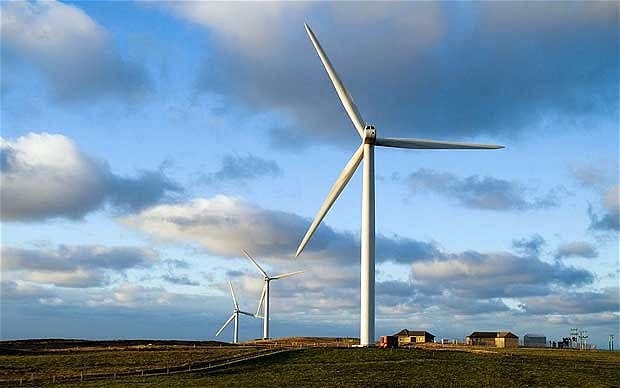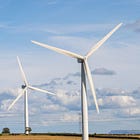The grift just keeps on giving, taken from our rapidly dwindling pockets.
Please read the following article by Paul Homewood which I am reposting in full.
Renewable Subsidies To Rise By £1.6 Billion This Year
By Paul Homewood • 8 March 2024
Following the new budget announced this week, the OBR [Office for Budget Responsibility] have published the full detail underlying it.
As usual they include the cost of Environmental Levies, which are in essence subsidies paid to renewable energy suppliers via our energy bills.
The cost for 2024/25 will rise to a record high of £11.5 billion , equivalent to over £400 per household. In addition the cost of the RHI scheme, which is funded from general taxation, adds an extra £1.2 billion.
Not all of the extra costs incurred because of policy are included. For instance, there is no mention of the costs of grid upgrades, system balancing costs and constraint payments – all the direct result of increased renewable generation.
One more thing worth pointing out is the projection that CfD [Contracts for Difference] costs will decline in 2027/28. There is no logic for this – no generators are likely to drop out of the scheme then, as their 15-year contracts won’t start to expire until well into the next decade. Moreover, subsidies will rise once Hinkley Point starts up.
The OBR may be assuming that some of the offshore wind farms which agreed lower rates will honour their contracts, but this is extremely unlikely.
The only logical explanation is that they expect wholesale power prices to substantially rise in 2027, thus reducing the amount of subsidies paid. This in turn suggests that they expect Carbon Prices to resume their upward march.
Either way, energy consumers will end up being much worse off.
I recommend reading the Office for Budget Responsibility's summary and see the documents they are relying upon for their fiscal outlook.
It is interesting to note that The Telegraph published the following article in 2015 which warned of the trebling of subsidies to renewable developments within five years.
Green levies on energy bills to treble by 2020 because of renewable targets, official figures suggest
The cost of renewable energy subsidies will rise from £3.1 billion to £9.4 billion by the end of 2020
By Steven Swinford • 19 March 2015 • 10:00pm
Green levies on energy bills will treble by 2020 because of renewable targets, official figures suggest.
The cost of environmental levies to support projects such as wind farms, solar panels and biomass plants will rise from £3.1billion last year to £9.4billion by the end of the decade, according tothe Office for Budget Responsibility.
Separate figures published last year show that the policies account for 5 per cent of energy bills at present - equivalent to £68 a year - to 15 per cent of an annual energy bill by 2020, equivalent to £226.
The rise is being driven by renewable energy targets, which require 30 per cent of Britain's electricity to come from renewable sources by 2020.
It comes despite growing concern among senior Conservatives that subsidies for renewable energy are pushing up people's gas and electricity bills.
David Cameron has reportedly said that the government needs to get rid of "this green crap" amid concerns about renewable energy subsidies.
He vowed last year to "roll back" green taxes which add an average of £100 a year to average fuel bills.
In an appearance before MPs earlier this month he also said that people are "fed up" with onshore wind farms being built and that "enough is enough".
The approach reflects a significant shift in the Conservative's approach to green subsidies.
In 2006, when David Cameron became the leader of the Conservatives, the party changed it's logo to a doodle of a green tree and soon after adopted the mantra "vote blue, go green".
According to the Office for Budget Responsibility, "environmental levies" will cost households £89 billion between 2013-14 and 2019-20.
The biggest element of them is the "renewables obligation", which subsidises green projects such as new wind farms. The subsidy means onshore wind farms receive £40 on top of the market price of power – giving a higher total income of about £85 to £90/MWh for 20 years.
• Big Six energy companies' profits 'increased tenfold since 2007'
• Bigger wind turbines will 'devastate' Lake District views
• Wind farm owners 'get £115,000 subsidy for UK every job they create'
• This is the next generation of renewable energy technologies
According to the OBR, the obligation represented £2.5billion of the £3.1billion worth of environmental levies in 2013-14.
The environmental levies include green levies as well as the warm homes discount.
Dr John Constable, director of Renewable Energy Foundation, a charity which has campaigned against energy subsidies, said: “Treasury's efforts to limit environmental costs, which are dominated by subsidies to renewable electricity, have so far failed to keep costs within safe limits.
"£9bn a year for decades is much too much, and will disenchant the public with current climate change mitigation policies.
"Many will say that if cutting emissions is this expensive it’s just not worth trying, and, quite frankly, they would be right. The resources could be better spent, on adaptation for example.”
It came as Ed Davey, the Energy Secretary, said in an interview with House magazine that he wants to see more onshore wind farms.
He said he was "on the side" of those who support onshore wind and accused his Conservative Coalition partners of "only listening to the loudest voices".
A report by the Centre for Policy Studies think tank earlier this week found that the true cost of wind farms and green projects is far higher than ministers have admitted.
Scrapping the UK's green energy targets in favour of gas-fired power plants would save consumers £214 a year by 2020, the report suggests – despite ministers’ insistence that the total impact of the policies will be only £141 per household by then.
Wind and solar farms rely on subsidies to be economically viable and the costs of the subsidies are charged to consumers through so-called ‘green levies’ on energy bills.
“The costs of intermittent renewables are massively understated,” the CPS argues, accusing ministers of an unstated policy objective to deliberately “hide the full cost and operational implications” of green power.
On that occasion, David Cameron was actually spot-on that we need to get rid of “this green crap” and the beyond generous subsidies which we pay for.
Please also see these related posts:











